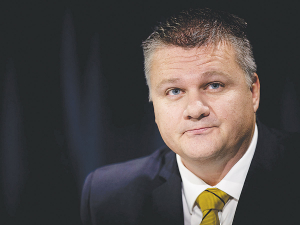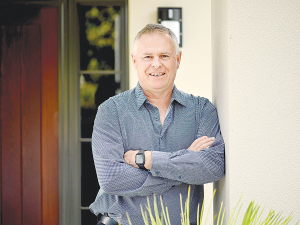In a rare joint statement with CRV Ambreed, the farmer-owned cooperative revealed it has found the cause of an occasional but recurring problem of diminutive dairy cattle: an autozomal (ie non sex-linked) recessive gene.
The syndrome manifests itself most frequently in Holstein Friesians, less so in crossbred, and hardly ever, if at all, in Jerseys.
For a calf to be born with the syndrome it has to be homozygous with the recessive allele of the newly identified gene. While they’re otherwise healthy, they’re so small some farmers have called LIC. Few have been weighed over the years but one that was came in at 27kg, says LIC’s general manager research and development, Richard Spelman.
Due to their diminutive size they’re rarely reared. When they are, “they come back as two-year-olds looking like yearlings and invariably don’t make it into the milking herd,” says Spelman.
Consequently there’s no data on how they might milk, but it appears the carriers – cows with a recessive allele and a dominant, normal-size allele of the gene – suffer no adverse effect. There’s even a possibility that heterozygotic advantage may give them an edge over cows with two copies (ie homozygous) of the dominant gene, though as yet there’s no evidence of that.
Spelman says as there don’t appear to be linkages with other positive traits, LIC, Ambreed, and, they hope, other genetics companies, aim to gradually breed SCS out of the national herd.
Average frequency of carriers in Friesians appears to be about 15%, and half that in crossbreds. Spelman says it’s unlikely the recessive gene has found its way into Jerseys. “There’s one animal out of many thousands that I’m suspicious of. If it does occur in Jerseys, it’s at a very, very low frequency.”
If a carrier bull is crossed with a carrier cow, there’s a one in four chance the resulting calf will be born with the syndrome, a 50% chance it will be a carrier, and one in four chance that it won’t carry the trait at all – the classic ratios of simple Mendelian genetics.
LIC says the average New Zealand herd of 400 cows could expect to have 60 cows which are carriers. Mated to a cross-section of Holstein Friesian bulls in New Zealand LIC expects one to two SCS calves would result.
Putting this into perspective, since the 1960s a quarter of one percent (0.25%) of calves bred from Holstein Friesian or crossbred type animals each season are likely to have been affected by SCS, it says.
Spelman says incidence “certainly has increased” over time but adds he would think in the last 5-10 years it’s been reasonably stable.
Whether it exists in overseas herds isn’t known yet, though LIC’s analysis of “a few animals” resulting from inseminations with imported semen hasn’t found any to be carriers to date. “It is possible this was imported in the 1950s or ‘60s.”
He anticipates now the trait has been identified, genetics companies elsewhere will want to check their stock. Further research to validate the discovery and scientific papers in journals are planned.
In the meantime, farmers can expect reports from LIC on the likely number of carriers in their herds based on the bulls they’ve been using.
LIC isn’t withdrawing the bulls in its team it has identified as carriers, however no new carrier bulls will be added. Its advice for calving this year is ‘business as usual’ in respect of assessing which calves to rear, and, as always, calvings should be recorded.
Through Datamate, technicians serving cows next season will ensure no cow which could be a carrier is mated with a bull that is a carrier. “It will be just like if they’re too close and there’s a risk from inbreeding: the technician will simply select another straw.”
Farmers who would rather not have any cows inseminated by carrier bulls will need to make specific selections from the Alpha catalogue, instead of using the Premier Sires’ ‘bull of the day’.
Spelman stresses the genetic variation doesn’t account for all small calves. “A lot of others born small have nothing to do with this. Last year from 52 samples [small calves], 20 were affected but the other 32 were due to some other cause, most likely environmental.”
In the past 20 years about eight such recessive genetic traits have been identified and eliminated but with the bovine genome now fully sequenced, that rate of problem trait elimination is set to accelerate.
“In the next 20 years you can expect to see a far greater number than eight, given the technological advances.”









